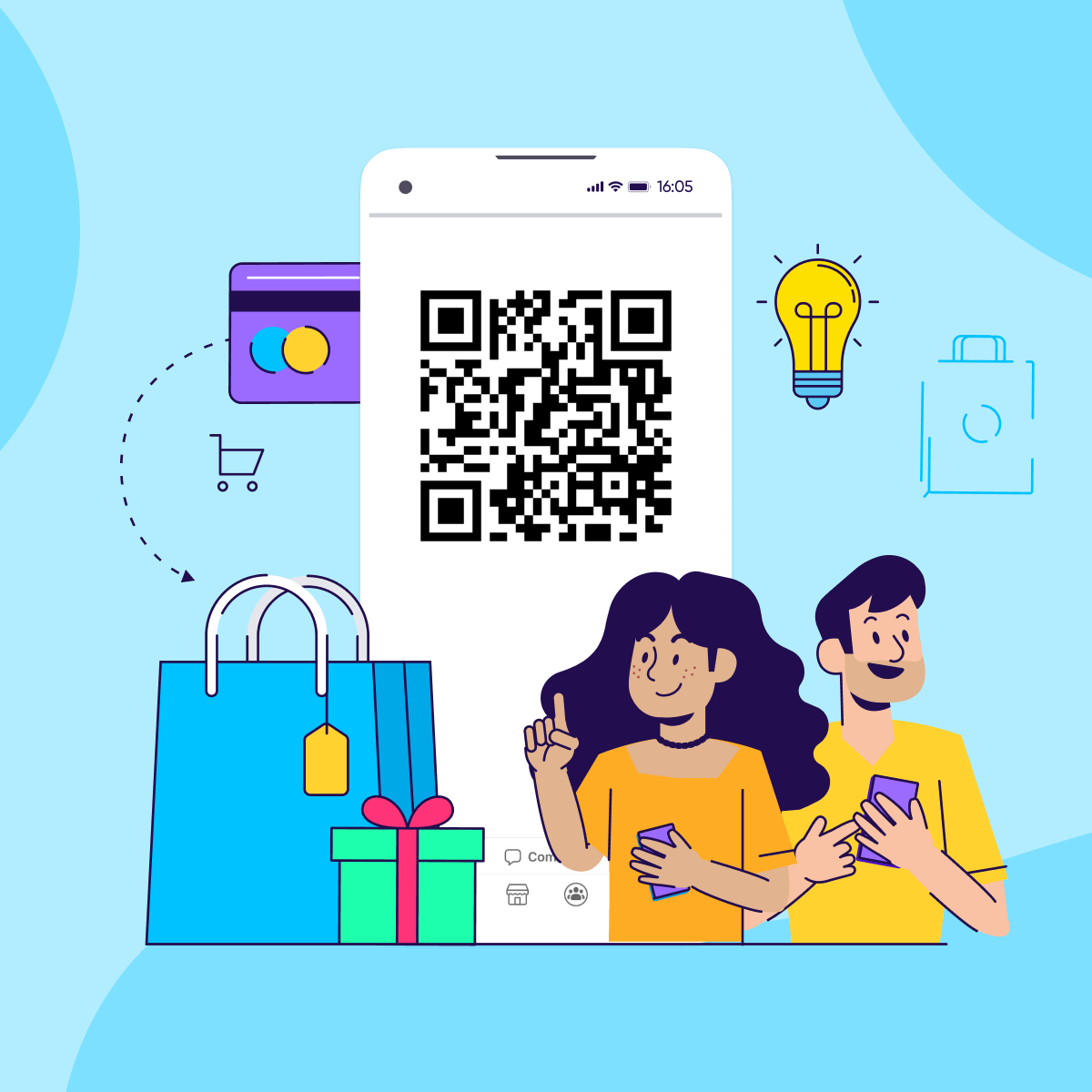
Bridging the gap between online and offline retail

After almost two years of pandemic-affected high streets, in-store shopping is back in a big way. And it’s not just that shoppers are flocking to shops simply because of the novelty of being able to get back into stores again: the economic conditions that are afflicting many nations around Europe are also providing further reasons for customers to use their feet instead of their phones.
Shoppers want to see what they are buying amid cost-of-living crises, according to Simon Roberts, CEO of supermarket chain Sainsbury’s. Shoppers are flocking to stores to be able to see what they’re purchasing first-hand as well as benefit from being able to walk away with their purchase immediately rather than having to pay for online delivery and wait at home for a parcel to arrive.
It would be easy to look at this rise in offline shopping – and the reasons underpinning it – and surmise that this is bad news for the eCommerce space. Look deeper, though, and you’ll find a trove of opportunities for the eCom space to capitalise on the growth of in-person shopping.
Several big brands are already pouncing on those opportunities – here, we’ll take a closer look at what steps they’re taking, how they’re doing it, and how it’s paying off.
Mobile is becoming more integrated into the in-store experience
Offline shopping is up, but so are shopping apps: in the UK alone, consumers spent 500 million hours in shopping apps last year, up 25% from the year before. Worldwide, that number is 110 billion hours.
Shoppers aren’t seeing offline and online shopping as a binary choice. They are increasingly expecting a seamless integration of the offline and online experience. One example of this is the “buy online, pick up in-store” model, which allows customers to shop online and collect their purchases from a nearby physical store.
Brands are realising this and ensuring that their respective apps are useful whenever the customer is in their physical stores as well as encouraging offline shoppers to move online. Having a complimentary experience on mobile is all part of keeping the customer within the brand’s ecosystem, fostering loyalty to that brand and driving increased revenue. And research from McKinsey has shown that the more channels a company has, the more market share that business gains.
QR code usage is skyrocketing
QR codes have been around since 1994, although it took another decade or so – and the rise of the cameraphone – before they found serious use in retail. In 2020, QR code usage in the USA grew by a stunning 25% year on year. Around 53m users scanned a smartcode in the USA in 2019; by 2022 that had risen to 83.4m.
The pandemic played a part in this, spurring the adoption of contactless payments and ordering in retail and hospitality. Now, QR codes are being used to support the in-store shopping experience in other innovative ways that go beyond the traditional offline-to-app flow.
US-based grocery store chain Albertsons, for example, wanted to accelerate app adoption amongst their millions of offline customers. They added AppsFlyer QR codes onto every physical receipt with an app download message, and after two months of running the campaign the QR codes generated over 1.2 million app visitors.
Plenty of brands are now using unique QR codes across different touchpoints in their stores and products. This not only tells the brand where the customer has come from – such as which type of product they were viewing in-store at the time of scanning – but also allows brands to provide a more personalised shopping experience that boosts customer loyalty as well as revenue.
This is creating a seamless experience between in-store and app. Clothing brand H&M use QR codes in changing rooms, at point-of-sale and in window displays to direct customers to the relevant part of the H&M app. A dedicated in-store mode in the app allows shoppers to book fitting rooms, locate products in the store, save a digital receipt, and collect loyalty points on their purchases – all from their mobile.
eCom brands moving into brick and mortar space
QR codes are just one tool that brands are employing as part of a wider omnichannel marketing strategy. Owned media usage is on the rise as eCom businesses seek to leverage every asset at their disposal.
We’re now seeing pure play eCom brands take this a step further, and open their own bricks and mortar or pop-up stores to supplement their online presence – rather than the other way around.
Fitness brand Gymshark were a pure eCom business until October 2022, when they opened their first store on London’s Regent Street. It’s a rapid development for a company that’s barely ten years old, and reflects the wider trend of brands interweaving their eCom experience with physical stores.
Brands who already boast an established bricks and mortar presence aren’t resting on their laurels, either: Marks and Spencer, for example, recently invested almost £500m in their stores with an explicit goal of securing a competitive advantage through an omnichannel strategy. They’ve done so via a new augmented reality (AR) shopping app that enables shoppers to easily find specific items on shelves and create shopping lists while in-store.
Gymshark and Marks and Spencer have taken opposing paths but arrived at the same omnichannel destination. These brands have realised that eCom and offline shopping should exist not as distinct parts of the same business, but as one seamless retail ecosystem that provides an enhanced shopping experience for their customers.
Key takeaways
Offline shopping is back, and eCom brands have latched onto the fact that this is good news for the industry – not a barrier. Investing in a greater shopping experience for customers, by ensuring that a brand’s mobile app supports the in-store experience and vice versa, will pay dividends:
- Innovative brands are ensuring that mobile is integrated into the in-store experience, with a rise in loyalty apps that reward customers for both online and offline purchases.
- QR code usage has risen rapidly, with brands deploying them at various touchpoints within stores to migrate offline users online, gain insight into customer behaviour and store performance, and to offer seamless user journeys between channels.
- Pure eCom brands are investing in bricks and mortar stores as part of a wider omnichannel marketing strategy which recognizes changing consumer behavior, allowing brands to gain greater market share and increase brand loyalty.
- Brands who already have a bricks and mortar presence are doubling down by investing further in their omnichannel approach, such as Marks and Spencer introducing an AR shopping experience for use in stores.




